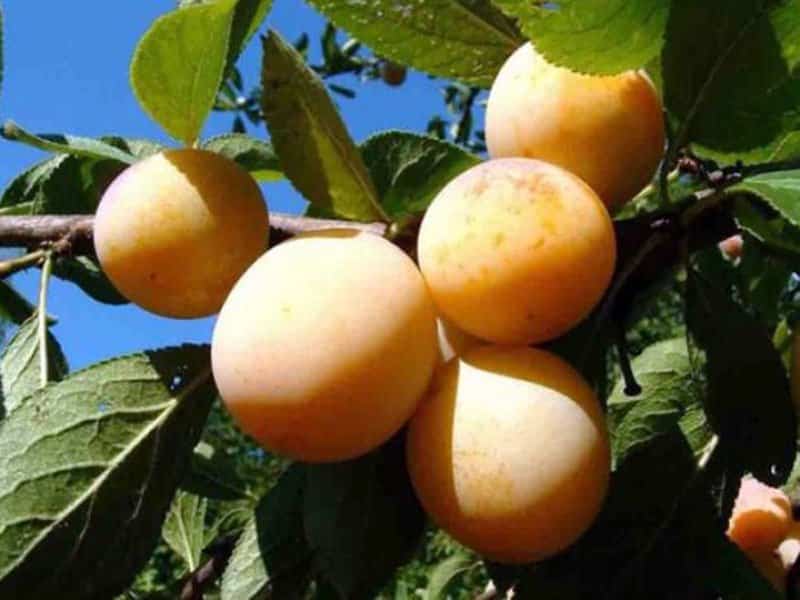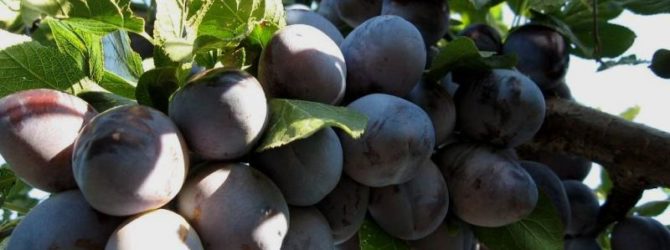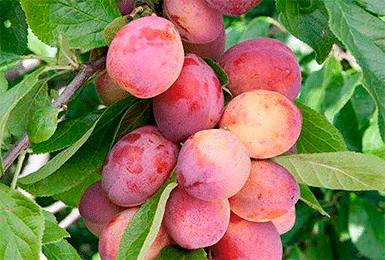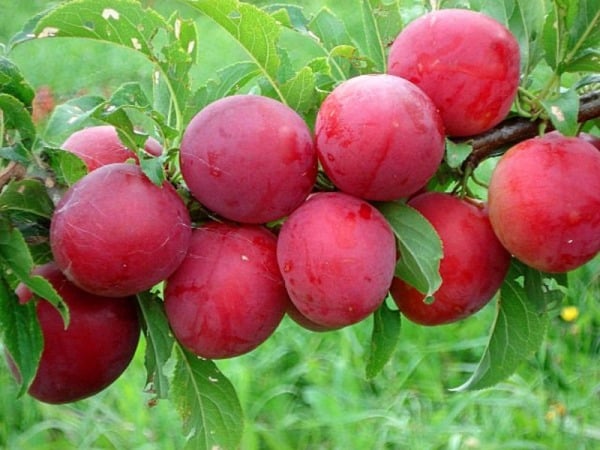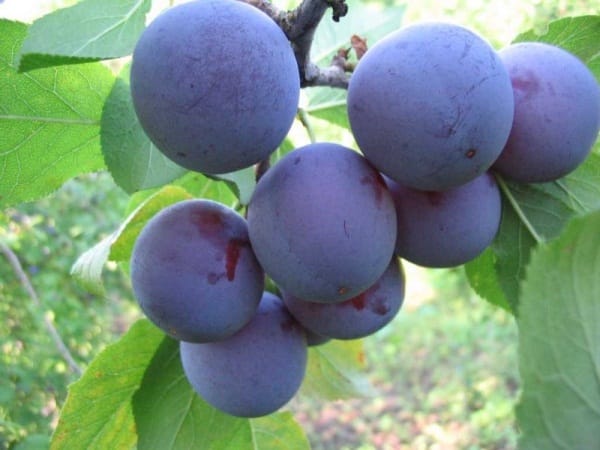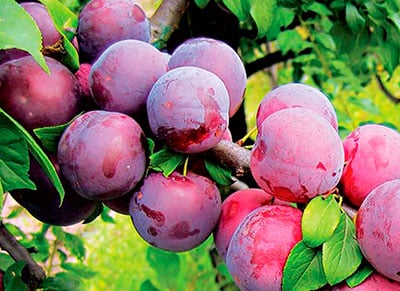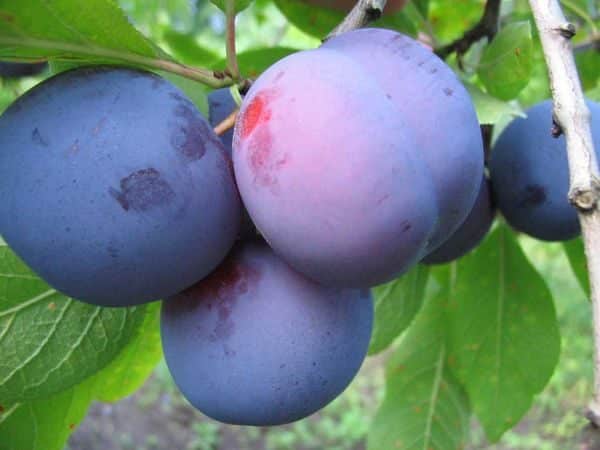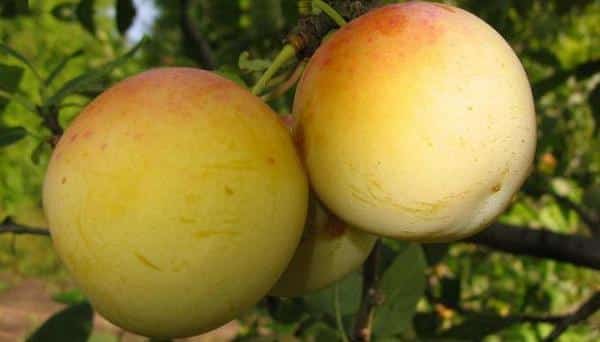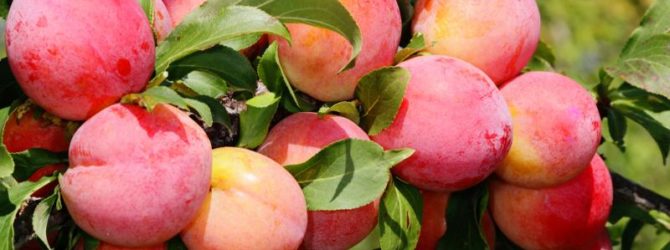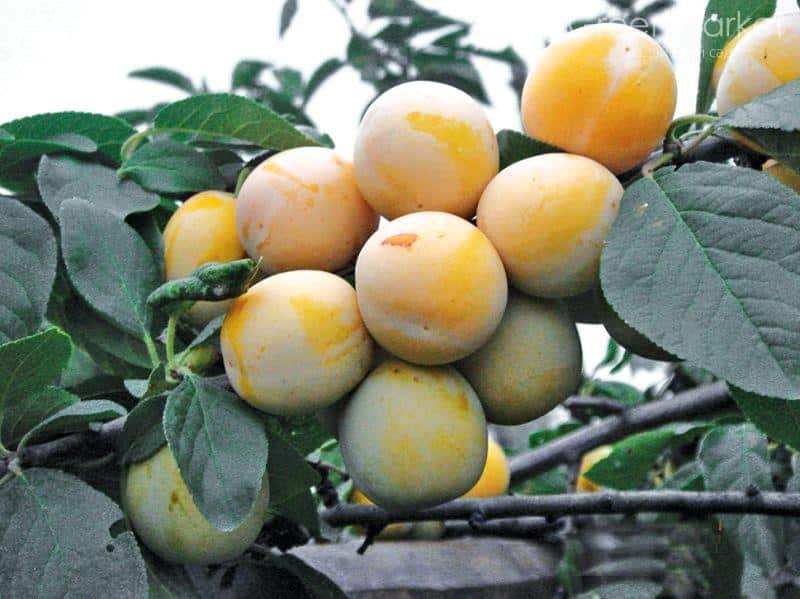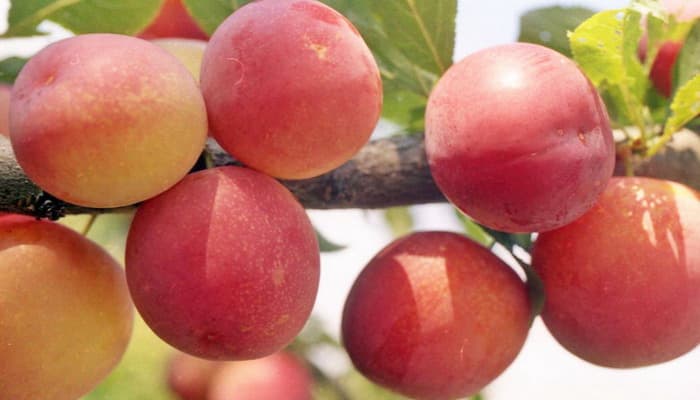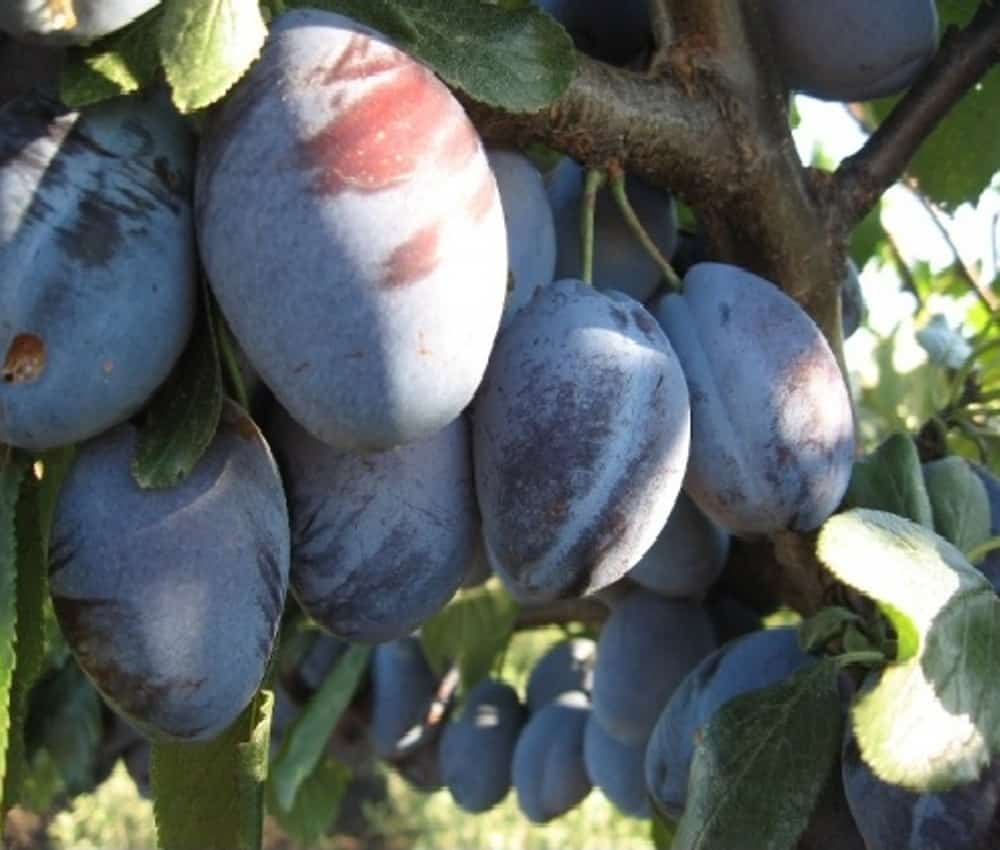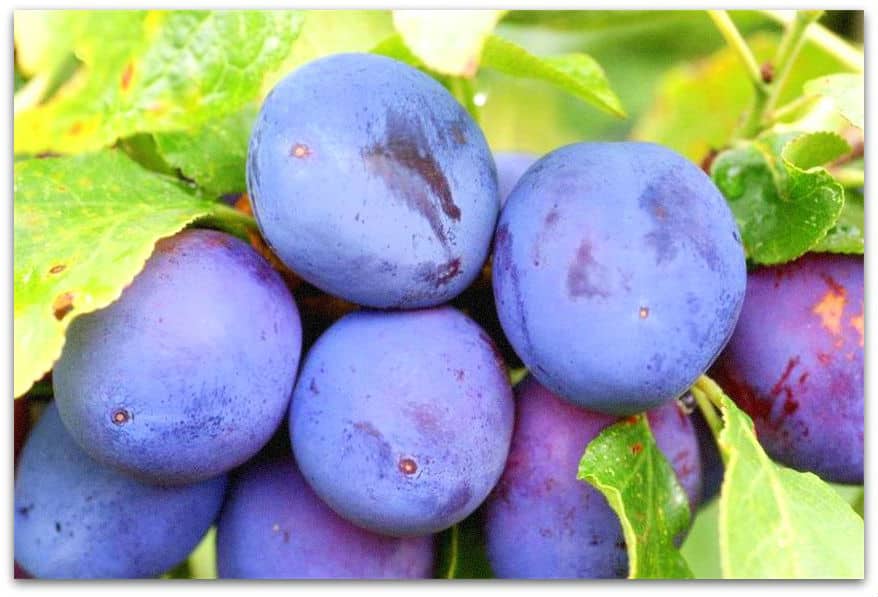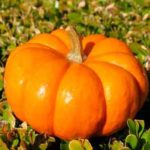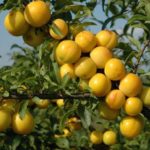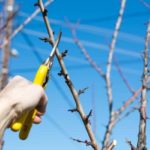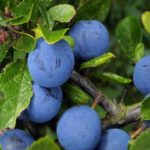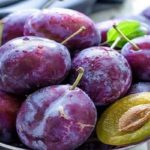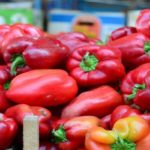The best plum varieties for the Moscow region differ in a number of characteristics. Hybrids come in medium height, short height and tall height. The climate of the Moscow region is perfect for plum trees. You can find winter-hardy and productive varieties of crops.
- The best plum varieties for the Moscow region
- Medium height
- Yakhontovaya
- Mara
- Korneevskaya
- Collective farm farmhouse
- Low-growing and columnar
- Imperial
- Oryol dream
- Red ball
- Vigorous varieties
- Egg blue
- Zarechnaya early
- Precocious
- Traveler
- Self-fertile
- Hungarian Korneevskaya
- Blue bird
- Representatives of late ripeness
- Sweet varieties
- Self-pollinating
- High yielding
- Large-fruited
- Yellow plum varieties
- Early
- Late
- New breeding species
- Features of plum cultivation in this region
The best plum varieties for the Moscow region
Before purchasing plum varieties for the Moscow region, it is important to study the descriptions and characteristics of candidate hybrids. To find out which species are best to plant in this region, it is important to select frost-resistant hybrids. This criterion is considered the most important. You can see varieties zoned for a given area.
Medium height
Medium-sized plum varieties are suitable for growing in small areas or in gardens where many fruit crops are already growing. Medium-sized hybrids do not take up much space, but at the same time they produce a rich harvest every year.
Yakhontovaya
The tree of this hybrid grows up to 4-5 m. Yakhontovaya is a yellow-fruited variety characterized by large fruits. Among the advantages of Yakhontova are frost resistance, which is very important when growing in the Moscow region, and productivity. If you follow the minimum rules of agricultural technology, you can collect up to 70 kg from a tree.
Mara
By 2-3 years of life, the Mara plum reaches a height of about 3 m. It is worth noting that this variety belongs to the cherry plum. The crown is spreading and thickened. Mara can tolerate frosts down to -35 degrees. The downside of the tree is its low resistance to drought. If the heat lasts for several days, cherry plum feels comfortable. And if the drought lasts for more than a week, the tree requires additional watering. The variety is productive, the fruits are tasty and sweet.
Korneevskaya
Plum Korneevskaya is a variety with blue fruits. The fruits are conical in shape, the skin is covered with a white waxy coating, which stands out well against the background of the blue skin. The pulp is juicy, with a sour taste. Korneevskaya is a self-fertile hybrid that does not require proximity to pollinating plums. Productivity is high.Even at the age of 10 years, the tree is capable of producing a harvest of up to 30 kg. Among plum tree hybrids, this result is very good for mature plants.
Collective farm farmhouse
The fruits of the Renklod collective farm hybrid are sweet, but there is a bitter taste, which many may not like. The skin color is green-yellow. Even at the stage of technical maturity, it seems that the fruits are not yet ripe.
Low-growing and columnar
Dwarf varieties of plums are suitable for small summer cottages because they do not take up much space. Another advantage of such varieties is that trees do not require frequent pruning.
Columnar varieties of plum trees have recently become popular, but have already become a favorite among summer residents in the Moscow region.
Imperial
The tree is small, the maximum height does not exceed 2 m, the trunk is completely covered with lilac-red fruits during fruiting. The fruits have a regular oval shape and no waxy coating is observed on the skin. The flesh is a rich yellow hue and has a sour taste, but at the stage of full maturity the sourness is not pronounced. On average, the weight of fruit is about 60 g.
Oryol dream
The Orlovskaya Dream hybrid is a Chinese variety. Plum fruiting begins in the 3rd year after planting the seedling. The tree begins to bloom in early May. The inflorescences have a strong aroma. On average, the height of the trunk does not exceed 3 meters. The pulp is dense and fibrous in structure, with a large number of veins. The taste is sweet and sour.
Red ball
A low tree with an average crown density. The fruit has a red-orange skin and an oval shape. There is an intense coating on the peel. The Red Ball begins to bear fruit 2-3 years after planting. The harvest is abundant every year.
Vigorous varieties
Vigorous plants have one significant drawback - they are not suitable for growing in small areas. These types of plums grow on average up to 5 m. In addition, due to their rapid growth, the plants have to be pruned almost every year.
To find out which variety to plant, you need to study the most common varieties.
Egg blue
On average, the Egg Blue plum variety grows up to 5 m. The crown is wide, dense and heavily leafy. The plum received this name due to the shape of the fruit. The fruits are small, weighing about 30 g. The pulp is juicy and sugary. The ventral suture is weakly defined.
Zarechnaya early
The fruits of the early Zarechnaya plum are large, but there are also small fruits. The skin is light blue in color with a thick waxy coating. The pulp, like most plum hybrids, is juicy and sugary. Separating the seed from the pulp is not difficult. Zarechnaya rannyaya is an early variety, and harvesting begins in July.
Precocious
The crown of this hybrid is wide and heavily leafy. The plant blooms earlier than anyone else, in early May. Flowering is abundant. Fruits with a strongly pronounced ventral seam, not large, weighing about 30 g.
Traveler
Cherry plum Traveler is characterized by a spreading, branched crown. The skin at the stage of technical maturity acquires a purple tint. The fruits are small, weighing from 19 to 28 g.
Self-fertile
The advantage of self-fertile varieties is that even under unfavorable conditions for pollination, these varieties give a good harvest. However, if you plant pollinator hybrids in your garden, your yield will increase significantly.
Hungarian Korneevskaya
The disadvantage of Hungarian Korneevskaya is that only in the 6th year after planting the seedling does fruiting become stable. But after 6 years, up to 50 kg of fruits are collected from the tree.The fruits are large, the flesh is rich orange in color.
Blue bird
The plant is medium in size, growing up to 2-3 m in height. The shape of the fruit is oval-elongated, weight is approximately 30-45 g. The advantages of the Bluebird are considered to be frost resistance and immunity to diseases of fruit trees.
Representatives of late ripeness
Among the late varieties of plums there are:
- President - the hybrid begins to ripen in the second ten days of September.
- Empress - the fruits begin to ripen in mid-September. High resistance to fungal diseases and pests.
The advantage of late plum hybrids is the length of storage of the fruit after harvest.
Sweet varieties
The most delicious plum hybrids:
- Volga beauty - the taste of fruits intended for dessert.
- Ochakovskaya yellow - late fruiting (7-9 years).
- Golden large - the fruits are not only sweet, but also large. The weight of the fruit is about 50 g.
- Firefly - fruiting begins 3-4 years after planting the seedling. The fruits are large, the pulp is sugary.
Sweet plum varieties are mainly suitable for fresh consumption.
Self-pollinating
Self-pollinating varieties are characterized by one big advantage compared to other types of plums - there is no need to plant pollinating trees nearby. Self-pollinating hybrids include:
- Chernaya Tulskaya - this variety produces a bountiful harvest every year even without the proximity of pollinators. Black Tula belongs to the blue-fruited species. The fruits are oval-elongated, the skin is covered with a thick waxy coating. The pulp is sugary, the seed is easily separated.
- Prunes - this variety of plum was obtained by crossing prunes and cherry plums. The skin of the fruit is blue, with a waxy coating, giving the fruit a bitter taste.The pulp is juicy, the seed is separated without difficulty. Plum Prunes are late self-pollinating varieties. The harvest is harvested until the end of September.
- In memory of Timiryazev - this variety was obtained by crossing the Victoria variety and Skorospelka Krasnaya. The Memory Timiryazev plum is considered one of the oldest and most popular species among summer residents.
Self-pollinating varieties are often planted as pollinator varieties for infertile ones.
High yielding
Every summer resident dreams of finding the highest-yielding plum hybrid:
- Bogatyrskaya - up to 70 kg of fruits are collected from one mature tree. The fruits are large, weighing 90 g.
- Svetlana - the yield is about 60 kg. Dessert plums with sweet pulp.
You can increase the yield of any variety by applying fertilizers to the soil.
Large-fruited
Large-fruited ones include:
- Jefferson - the fruits of this hybrid reach a weight of 60-70 g.
- Memory of Babylon - the average weight of the fruit is 80-90 g. The yield of this variety is also high.
- Mashenka - the fruits reach a weight of about 85 g. The skin is red-purple, the flesh is sweet, with a sour taste.
Large-fruited varieties are universal in use and most often have high taste.
Yellow plum varieties
All yellow plum varieties are sweeter than blue plums:
- Honey - fruits reach technical maturity in July-August. Fruits weighing 30-55 g.
- Yellow Afaska - the crop begins to ripen in August-September. The tree is tall.
Cherry plum varieties are also classified as yellow-fruited varieties.
Early
Early ripening plum varieties ripen in the summer, around July:
- Cooperative - the yield per tree is approximately 40-45 kg. The fruits are large, weighing on average up to 55 g.Ripen in the second half of July.
- July - up to 15 kg of harvest can be harvested from a tree during the season. The fruits are not too large, weighing from 30 to 40 g. Iyulskaya begins to bear fruit in the 3rd year after planting the variety.
Despite the fact that early species ripen in early summer, the harvested crop is not stored for a long time.
Late
Fruit ripening of late plums begins in early September. It continues until October.
Better late-ripening plum varieties:
- Stanley - the fruits of this variety are purple in color. Harvest ripening begins in early September. The advantages of Stanley are resistance to frost and drought. The hybrid is self-sterile; President and Empress plums are planted as pollinators.
- Hungarian Italian - has average resistance to frost and disease. The fruits are large, mass ripening begins in September. The pulp is yellow-green, sugary, and has a sour taste. Hungarian Italian fruits can be stored in the refrigerator for up to 1 month.
The advantage of late varieties is that the harvested crop is stored for a long time.
New breeding species
Every year, breeders create more and more new varieties of plums, crossing old ones or improving them.
New breeding types of plums:
- Tatar yellow - the fruits are not large, the weight is about 30-35 g. Frost resistance is average, the tree is able to survive mild frosts.
- Morning - refers to hybrids with a mid-early flowering period. The fruits ripen in mid-summer. Frost resistance is high. The fruits are not large, weighing up to 40 g.
It should be noted that new plum varieties are not always better than old ones.
Features of plum cultivation in this region
Planting and caring for plums in the Moscow region does not differ in any nuances.Growing plum trees in open ground involves timely application of fertilizing, organizing watering and taking preventive measures against diseases and pests.
Watering is carried out four times a season, as is fertilizing:
- The first time a year the plum is irrigated during the period of bud formation.
- The second is during flowering.
- The plants are watered a third time during the formation of ovaries.
- The last time was before the onset of winter.
During the first half of the season, trees need nitrogen. Urea, ammonium sulfate, sodium nitrate or ammonium nitrate are used as fertilizers. The main thing is not to combine the application of nitrogen with wood ash. This combination of fertilizing helps flush out ammonia.
In the second half of the season, the soil is fertilized with potassium and phosphorus. Superphosphate, potassium salt, and wood ash are used. From organic matter, manure and infusions based on weeds are added to the soil. Spraying with copper-containing preparations is effective as a preventive measure. Procedures are carried out in the spring, before flowering, and in the fall, after harvesting.

